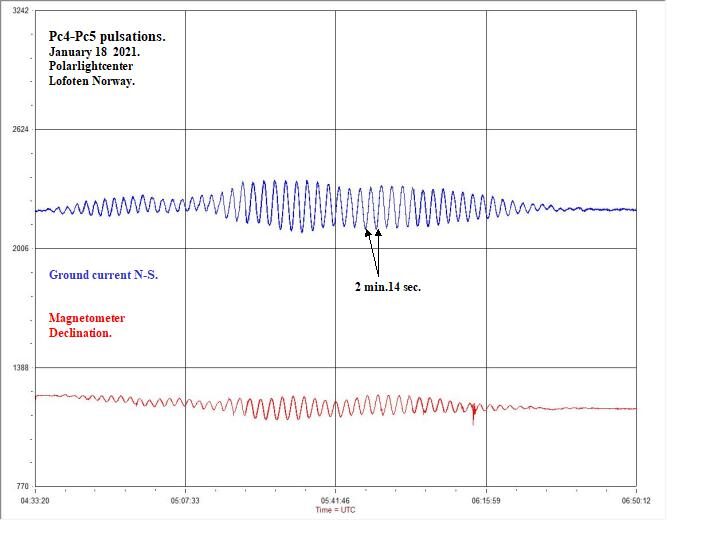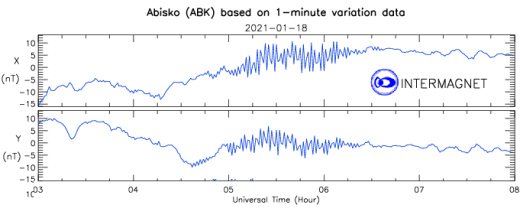
"Around 05.30 UTC on Jan. 18th, our local magnetic field began to swing back and forth in a rhythmic pattern," he says. "Electrical currents in the ground did the same thing. It was a nearly pure sine wave--like a low frequency musical note. The episode lasted for more than 2 hours."
Stammes has received such notes before, but they are rare. "I see a pattern like this only about once a year," he says.
Space physicists call this phenomenon a "pulsation continuous" or "Pc" for short. Imagine blowing across a piece of paper, making it flutter with your breath. Solar wind does the same thing to magnetic fields. Pc waves are essentially flutters propagating down the flanks of Earth's magnetosphere excited by the breath of the sun.
Yesterday's set of waves washed over Norway and Sweden, but almost nowhere else, according to the global INTERMAGNET network of magnetometers. It was a strictly regional phenomenon.
What happens in the sky when such a pure tone emerges from the natural background cacophony of magnetic activity? "I wish I knew," says Stammes. "I was asleep at the time." In fact, it's possible that no one knows. Tones like these are rare, and they all too often occur while skies are cloudy or daylit, blocking any peculiar auroras from view. Stammes says he plans to build an alert system to help him find out. No pun intended: Stay tuned.




Comment: It would appear that there has been an uptick in rare and unusual phenomena in our skies:
- "The Dunes": NEW type of aurora discovered, and the unexpected physics behind it
- Gigantic jet photographed piercing the sky in China
- Rare green flash sunset photographed flickering into even rarer blue in Norway
- Electric currents driven by solar wind create Saturn's auroras, heat planet's atmosphere - NASA
- Unusual green glow spotted in Mars' atmosphere
Also check out SOTT radio's: